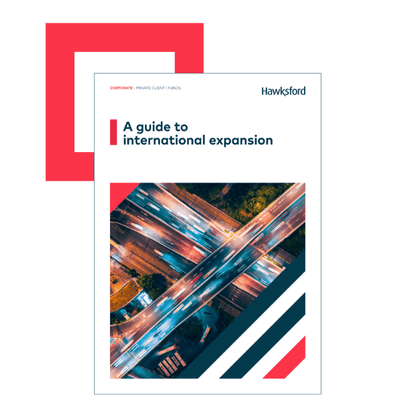The Chinese Ministry of Finance along with the State Administration of Taxation (SAT), and the Ministry of Commerce introduced a tax credit policy on 27 June 2025 that expands tax incentives for foreign investors reinvesting their distributed profits earned in China back into the country.
This article briefs how foreign investors can maximise their after-tax returns in China by utilising the new tax credit for reinvested profits.
What is the new tax credit on reinvestment policy for foreign investors
Building on the foundation of Circular Caishui [2018] No. 102 ("Circular 102"), the newly issued Circular 2025 No. 2 ("Circular 2025-2") introduces a substantial tax credit mechanism, effective from 1 January 2025 to 31 December 2028. It allows eligible reinvestments by foreign investors to benefit from reduced taxes, freeing resources for growth and innovation.
This measure removes previous barriers and encourages overseas investment in sectors aligned with China’s modernisation goals, reinforcing the country’s appeal to global investors.
Circular 102 - tax deferral policy (still valid)
Qualified overseas investors may defer the standard 10% withholding tax on dividends if those dividends are reinvested directly within China. The tax becomes payable only upon recovery or withdrawal of the investment.
Circular 2025-2 - the new 10% tax credit incentive
In addition to the deferral, eligible reinvestments made by the foreign enterprises during the applicable period may now receive a tax credit equal to 10% of the reinvested amount. Unused credits can be carried forward to offset future tax liabilities.
This policy goes beyond simply deferring a payment; it provides an active reduction in the overall tax liability. For foreign investors planning for the long term, this combination of tax deferral and a direct tax credit on reinvestment makes reinvesting in China more appealing.
Eligibility criteria for the tax credit for foreign investors in China
Source of profits and applicable period: Only actual dividend distributions from Chinese resident enterprises to overseas investors between 1 January 2025 and 31 December 2028 are eligible.
Reinvestment types include:
- Increasing the registered capital or capital reserves of an existing Chinese company
- Establishing a new Chinese resident enterprise
- Acquiring equity interests from an unrelated party in a Chinese resident company
Please note that investments in, or acquisitions of, shares of publicly listed companies are excluded except where such transactions fall under specific strategic investment regulations.
Industry restrictions: The investee entity (the “target company”) must primarily conduct its business within an industry specified in the current Catalogue of Industries Encouraging Foreign Investment.
Minimum holding period: The investment must be retained for at least five years (60 months). If the investment is withdrawn prior to five years:
- The tax credit amount will be reduced proportionally.
- If an excess credit has already been claimed, the overused portion must be repaid with interest within seven days of recovering the investment.
These requirements are intended to promote long-term investment.
Direct fund flow: Fund or assets must be invested directly without the involvement of intermediaries.
- Cash: Payments should be made directly from the dividend-paying company’s account to the target company (or the seller in the case of acquisitions), with no intermediate accounts utilised, whether domestic or international.
- Non-cash: Assets or securities must be transferred directly from the dividend-paying entity to the target company (or seller) and should not be temporarily held by any intermediaries.
How to use the tax credit on profit reinvestment
Credit amount: Qualifying reinvestments are eligible for a credit equal to 10% of the reinvested amount, which may be applied against the overseas investor's current enterprise income tax liability in China.
Unused credits carryforward: Any unused credits may be carried forward to subsequent years.
Tax treaty rate cap: Where a relevant Double Taxation Agreement (DTA) between China and the investor’s home jurisdiction provides for a dividend tax rate lower than 10%, the DTA rate shall apply in determining the maximum allowable credit. This ensures that credit claims do not exceed the DTA limitation.
(For reference, common DTA rates include a 5% withholding tax on dividends repatriation for Hong Kong SAR, Singapore, UK, France, Germany, Italy1.)
Note: Under the tax treaty between China and Italy, effective in 2026, if the beneficial owner of the dividends is a resident of the other Contracting State (China or Italy), the tax charged on such dividends:
1. Shall not exceed 5% of the gross amount of the dividends, if the beneficial owner is a company that directly holds at least 25% of the capital of the company paying the dividends throughout a 365-day period that includes the dividend payment date.
2. Shall not exceed 10% of the gross amount of the dividends in all other cases.
Eligible tax amount for credit/offset: The withholding tax associated with dividends, interest, royalties or similar income received by the non-resident investor from the profit-distributing enterprise following the date of the profit distribution reinvestment.
Illustrative example

Singapore Company A receives a CNY 10 million dividend from Chinese Company B. Company A reinvests the entire amount (i.e. CNY 10 million) to establish Chinese Company C. Assuming the China-Singapore DTA rate set at 5%, Company A is eligible for a CNY 500,000 tax credit (which is 5% of CNY 10 million). Subsequently, Company A receives CNY 3 million in interest, subject to a 10% withholding tax under the China-Singapore DTA, resulting in a CNY 300,000 tax liability. Company A may use its tax credit (CNY 500,000) to offset this liability, allowing CNY 200,000 to be carried forward.
Reinvestment tax credit application and compliance process
1. Application submission: The target company submits reinvestment details and supporting documents through the MOFCOM Unified Platform.
2. Local review: Local commerce authorities verify the submission.
3. Joint approval: Provincial commerce, finance and tax authorities collaboratively assess eligibility.
4. Issuance of Confirmation Form: Upon approval, the authorities issue a uniquely coded “Profits Reinvestment Confirmation Form” to the target company.
5. Form transfer: The target company transfers the confirmation form to the overseas investor.
6. Tax treatment: The overseas investor presents the form to the Chinese company (the “Payer Company”) that distributed the original dividend.
- The payer company is not required to withhold tax on profits that are reinvested.
- For any subsequent taxable income (such as dividends, interest, or royalties) received from China by the overseas investor, the credited amount may be offset against the withholding tax due on such income. The payer company will apply this offset during the reporting and payment of withholding tax.
Please note: Should the investment be recovered within the five-year holding period, the same reporting procedure remains applicable. Any excess credit utilised must be repaid, including applicable interest.
Strategic implications for foreign investors
China’s expanded tax incentives allow foreign investors to defer withholding tax on eligible reinvested profits, retaining capital for further domestic growth. Beyond the fiscal benefits, these measures are aimed at reinforcing investor confidence and encouraging reinvestment in innovation and strategic sectors such as green technology and AI.
Eligibility applies to certain reinvestment activities, and businesses are required to keep comprehensive documentation and clear records to meet compliance requirements set by tax authorities and for accurate reporting to the State Tax Administration.
How Hawksford can help
Hawksford delivers comprehensive support throughout every stage of your business in China - from interpreting relevant policies and assessing eligibility to managing applications and ensuring ongoing compliance.
Please reach out to our team who can help you develop a tailored China dividend reinvestment plan that helps with your tax efficiency planning.

Speak to our experts today
Explore how our corporate services can elevate your business needs
Updated on



